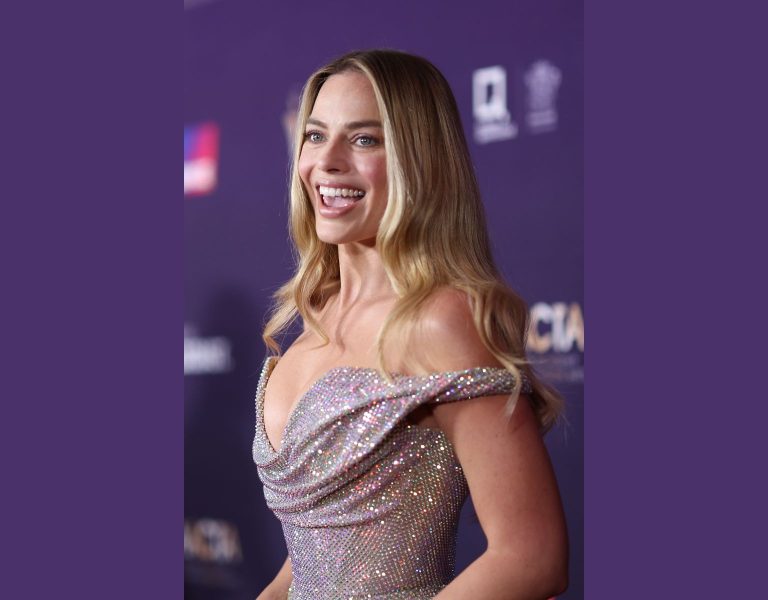Rufai “Roo” Ajala rose to the challenge of shooting a feature on a short film budget for their ambitious graduate project, Que Te Vaya Bonito, Rico (May It Go Beautifully for You, Rico).
Rico, an aimless teen from a strict Latino family, and his underage pregnant girlfriend sell illegally brewed cocktails, ‘Nutcrackers’, on a beach in The Bronx to get by.
The Que te vaya bonito, Rico shoot was part of a larger production undertaken by this NFTS team as they work towards completion of a feature film for which they secured additional investment.
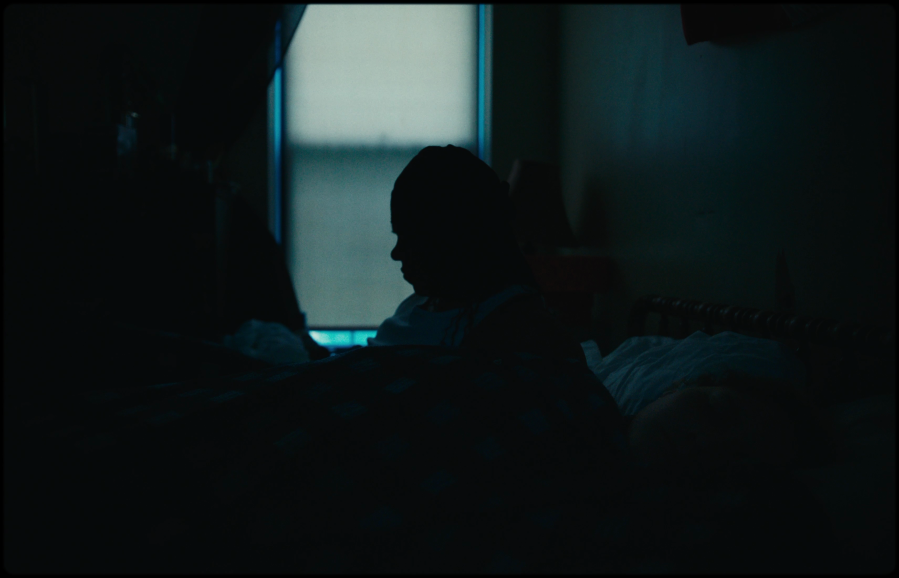
British Cinematographer (BC): Why did you decide to study cinematography? Please tell us a little bit about your filmmaking journey so far, as well as your influences and inspirations.
Rufai Ajala (RA): Christopher Doyle HKSC, Bruno Delbonnel ASC AFC and Bradford Young ASC are among my favourite cinematographers, influences and inspirations.
I decided to go back into education and to study at the NFTS because I have had a career coming up through the ranks in the lighting department, working as a spark and a gaffer for over 13 years, so I felt it was time to step up to a DP role and coming to NFTS would help me in that next step in my career.
BC: What were your initial discussions with director Joel Alfonso Vargas about the visual approach for your film? What look and mood were you trying to achieve?
RA: Joel really wanted a fly on the wall (or as he called it — a beer bottle left at a party) approach and view to the cinematography and camera language. He wanted the visual style to feel grounded in reality. This was a film about real people and real experiences.
The film is a semi-autobiographical story about Joel, who grew up around these people and experiences in the Bronx. He wanted this film to be as true to life as possible, and so we, the crew, were soaked and enmeshed in the Bronx community he grew up in, to bring a true and authentic gaze to this story. Films and inspiration we looked at that we felt achieved this visual style and language were: Ya No Estoy Aquí/I’m No Longer Here (2019), Ossos (1997) and Happy As Lazzaro (2018).
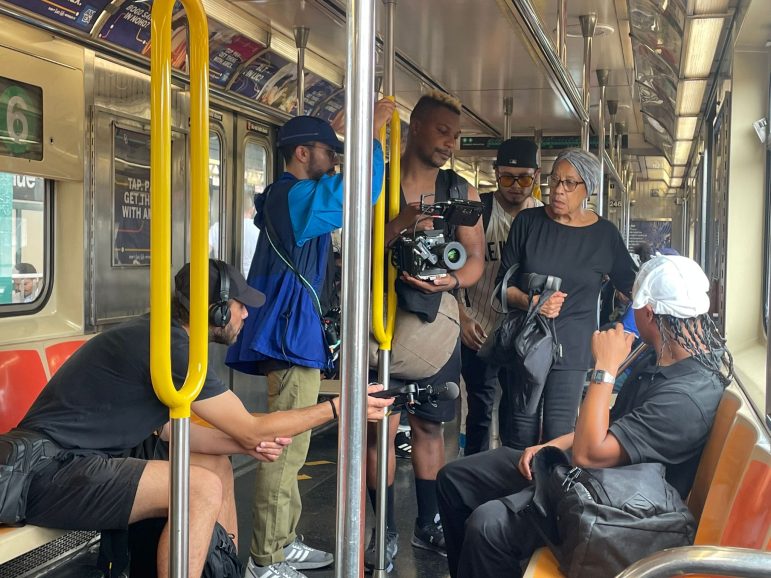
BC: What were your creative references and inspirations for your film? Which films, still photography or paintings were you influenced by?
RA: We as lead creatives settled on a creative approach that tried to emulate medium format film photography. We really liked how with analogue medium format film photography, especially portraits shot on this medium, the characters and subjects stood out. The depth of field in medium format film creates distinctive separation between the foreground, midground and background elements. And we had the hard task of trying to create this visual look on a S35 sensor on the ARRI Alexi Mini. I think we were successful in creating that large format look.
The work of photographer Wayne Lawrence (Orchard Beach: The Bronx Riviera) was a key inspiration of what we wanted to achieve.
Another approach we wanted to take creatively was having very ‘considered’ frames and portrait-style single shots and set-ups per scene, for the whole action to play out for our scenes. A key inspiration we took from cinema that had a similar approach was the film: Ya No Estoy Aquí/I’m No Longer Here (2019) and how it utilised minimal set-ups and camera angles per scene and allowing the action to take place in a single frame.
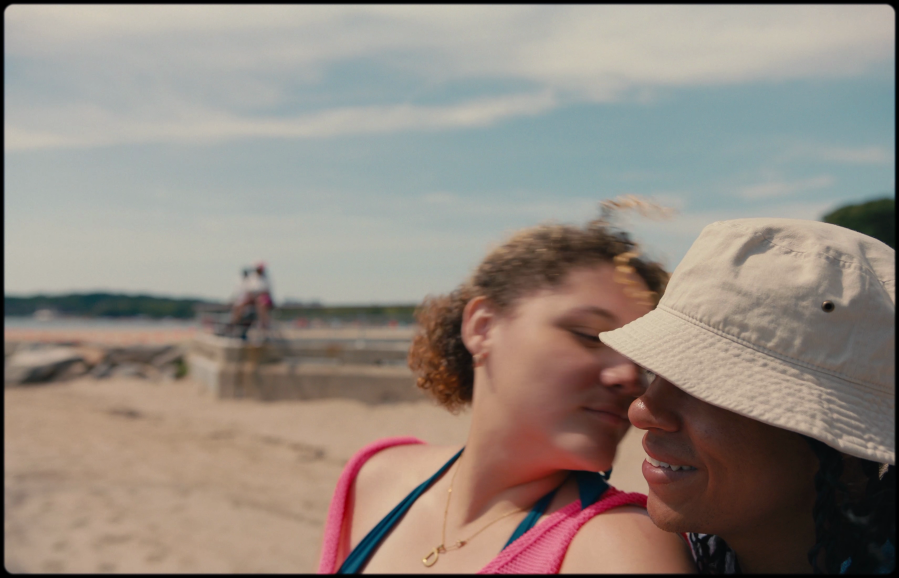
BC: What filming locations were used? Were any sets constructed?
RA: This film was shot entirely in New York City, USA; in the Bronx. The film is a Bronx story, the characters, the director, the inspiration, the language, the emotion, all of this is very much a Bronx story, shot in and around: Orchard Beach, Pelham Bay Park Subway Station, Fordham Road, City Island, etc.
BC: What camera and lenses did you choose and why? What made them suitable for this production and the look you were trying to achieve?
RA: Marni Zimmerman at Panavision New York and Victoria Harris at Panavision London were hugely helpful in us creating and making this film. Panavision supplied us with an Alexa Mini package, paired with Zeiss Super Speed lenses. Because of the low-profile nature of the film and the fly-on-the-wall approach we wanted to achieve, our camera package had to be very streamlined, stripped down and low profile to be as unimposing as possible to shoot in the spaces and locations we wanted to shoot in. Hence our lens choices and camera package. With the lens test we did, we loved the look the Zeiss Super Speeds created. When paired with the ARRI Alexa Mini they gave a depth and large format look that we were after and trying to create.
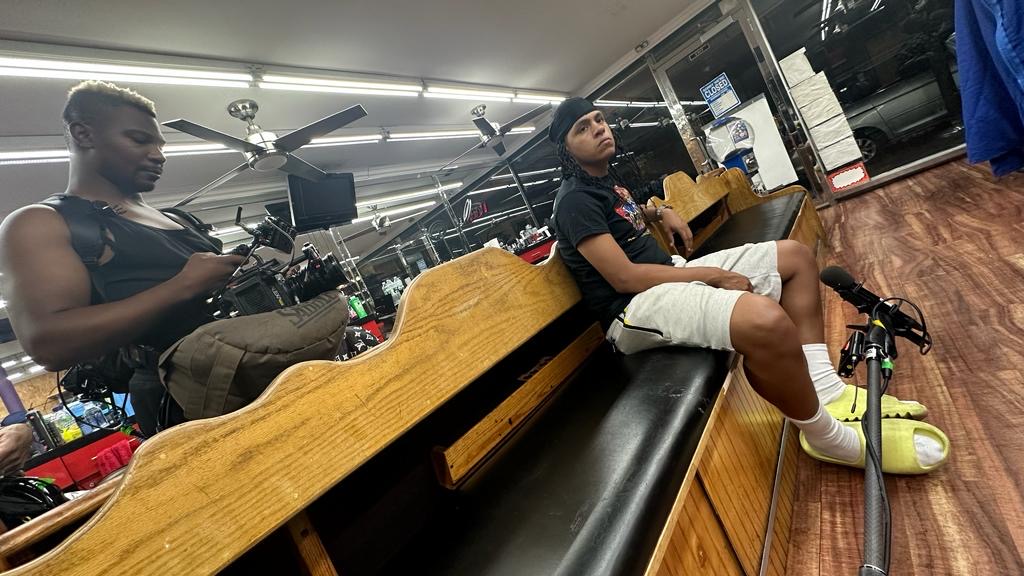
BC: What was your general approach to lighting?
RA: The overall approach to our lighting was similar in that the lighting had to be based in the real world of the setting of the film and its locations. Meaning we were working a lot with the natural light and just augmenting and adding to the existing lighting that was in the spaces. This meant relying on the pathway of the sun and planning our shoot and set ups accordingly.
BC: What was the trickiest scene to light?
RA: I would have to say the trickiest scenes to light were: the interior living room scenes and the majority of the night exterior scenes. Both for similar reasons. The interior living room scenes due to how wide and large the space was, it was very hard to hang any lighting fixtures to boost the interior ambient lighting. And because we were on the fourth floor of an apartment complex it was so hard to light from the exteriors. So I really had to plan with the pathway of the sun in mind.
I was particular about what lighting fixtures I needed that could give me the power output for the ambience I needed for day scenes at 5600K (daylight) and the flexibility by being bi-colour for night scenes at 3200-2700K (tungsten). So getting a fixture that could do both owe output and was bi-colour was essential.
When it came to lighting the night exteriors, we relied on the existing street lamps, shop lights, lights from vehicles and cars, et cetera that existed in those locations and environments, and then placing our actors in the most suitable spot. One thing that’s an advantage when shooting in cities like New York City is that it’s a city; a true 24-hour metropolitan city. These cities are generally very bright from all these existing lights that illuminate their streets and advertise to the local patrons. So we were able to utilise this to our advantage.
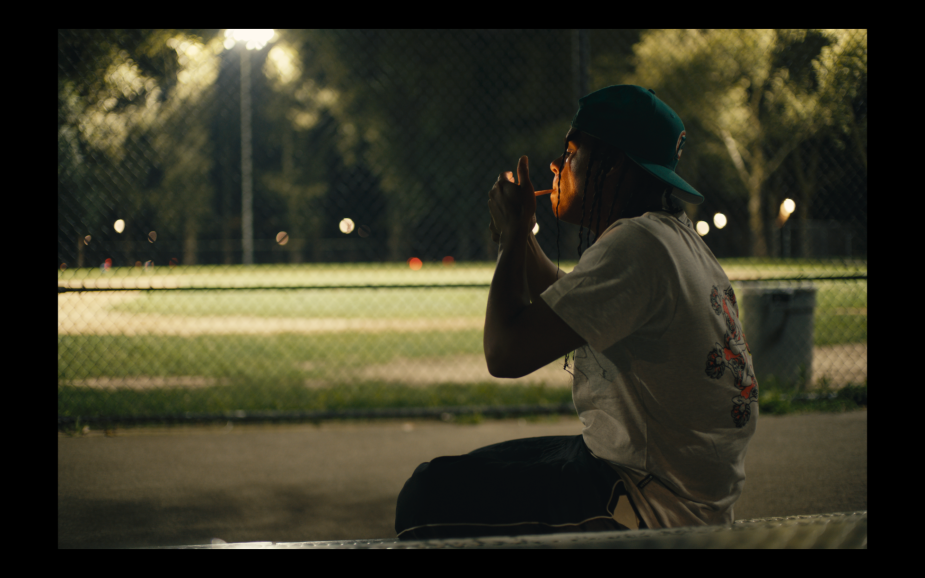
BC: Who did the grade and what look did you want to achieve?
RA: Emmanuel Benjamin was our colour grader. We did extensive camera and colour tests before we left the UK as well additional tests when we were in NYC. The UK’s weather during the summer didn’t us give a one-to-one idea of what New York’s weather would be during the summer, so we did those tests knowing they would not give us the whole picture.
In our story we wanted to get across a sense of the overbearing heat that occurs during the summer months in New York City, as well as the colours associated with this humid heat. The heat that comes from being in a sprawling, dense city-scape, made from glass and concrete jungles that reflect and refract the light sevenfold making it brighter, warmer and unbearably humid. Two films we used as colour references for this visual motif were: Raising Victor Vargas (2002) and Do The Right Thing (1989).
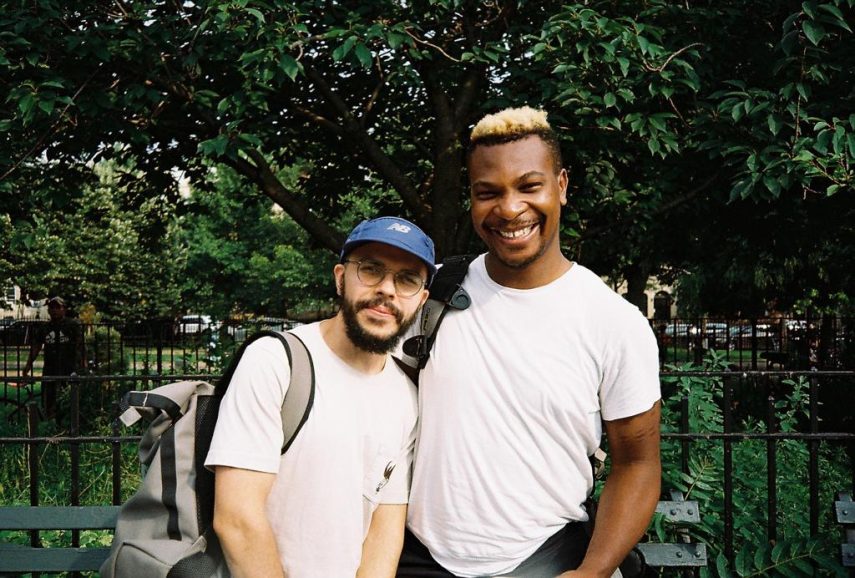
BC: What is your proudest moment from the production process?
RA: My 1st AC; Oscar Rutishauser-Mills, who also stepped in to be my additional camera operator, was my rock during this entire production. The director of the film wanted to shoot a feature-length film in the span of 14 days – on the budget usually provided for our graduating film at the NFTS, which usually only covers seven days of shooting. With this context, a graduation film from the NFTS is usually 20-30 minutes in length. So, pulling this off took incredible ingenuity and on-boarding crew that knew the mountain of work ahead of us. And Oscar was the person who held me down.
On this production, I understood and realised how important surrounding yourself with the right crew is so important for crew moral, crew mental health and wellbeing.
BC: What lessons did you learn from this production that you’ll take with you onto future productions?
RA: I learn how to think quickly on my feet. How to create a camera package so small, streamlined and incognito that it’s practically invisible to members of the public and our actors – it’s low profile. I learned how to work with available light and how to use it to its maximum potential. And if need be, bring in additional lighting to add to the existing and available lighting in the space by augmenting it to serve our need and purpose.
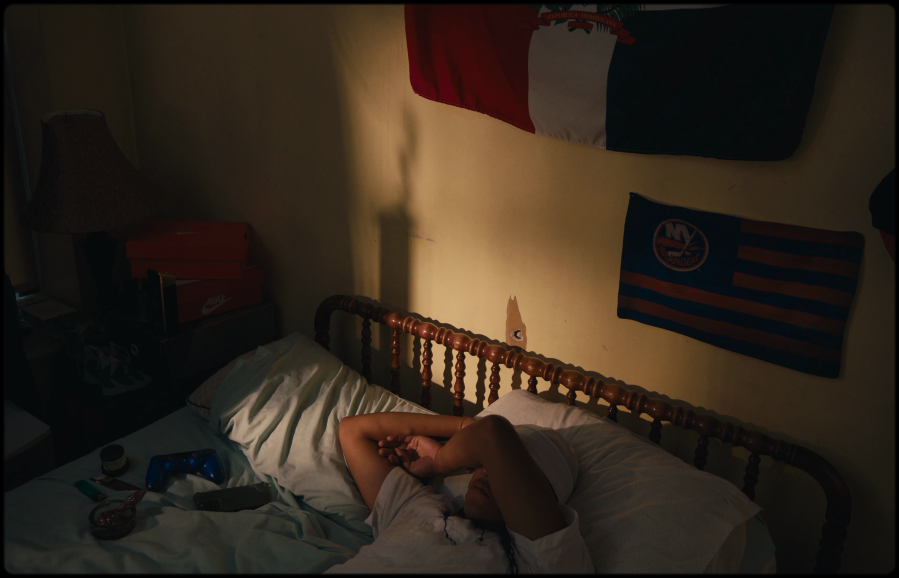
BC: What would be your dream project as a cinematographer?
RA: I love anything that explores the depths of intimacy and using intimacy to tell stories. Not just regular old affection and intimacy, but really profound, doing something different ‘intimacy’. Using intimacy as a storytelling device. I love stories that shows a character’s complex relationship with their sexuality, sex, gender and intimacy. So I would love to shoot more projects like that which show the unexplored side of those relationships.
BC: Is there anyone not yet mentioned that you’d like to highlight?
RA: I would like to highlight the tireless work of our 1st AD: Mathew Reyes who grew up in the Bronx and was truly a godsend. He made sure to hook us, the crew and cast, up with the most amazing food spots for lunch!
I am also grateful to my New York contact, fellow cinematographer Evan Burris Trout, for connecting me with Marni at Panavision NYC. My gaffer; Jorge Quintero, whose experience, expertise and eye, this film wouldn’t have been possible.
And finally and especially, the cast. The lead actor and the supporting lead actress were not professionally trained actors but they really gave their all to this project. I thank them for all the time we spent together in hot unventilated rooms with, little to no air condition or fans during one of the hottest months in New York during our shoot – because the sound recordist would have been unhappy. And being the air of professionalism at all times.
I’m grateful to y’all for allowing me and my operator in your intimate space when creating these intimate scenes. And how you both kept pushing yourselves and holding your patience with us in the ever-changing city that is New York City when things could and did change at the drop of a hat. Thank you all.
Read the rest of our series spotlighting the NFTS’ 2024 cinematography cohort.



